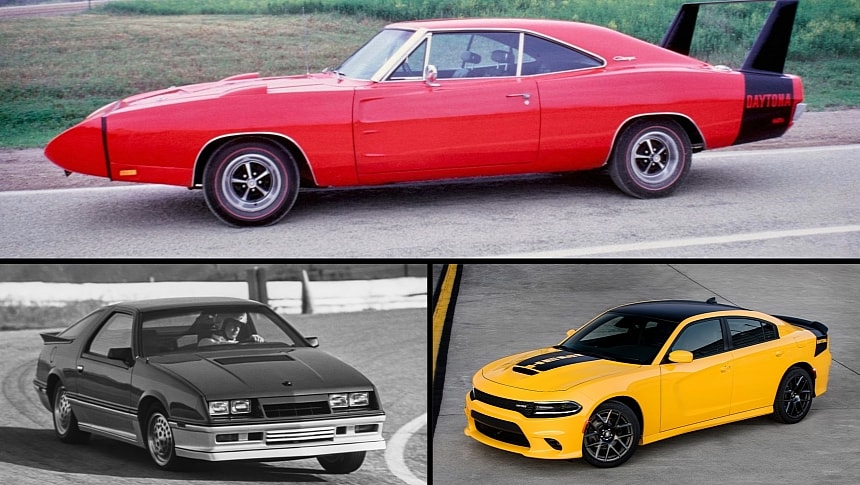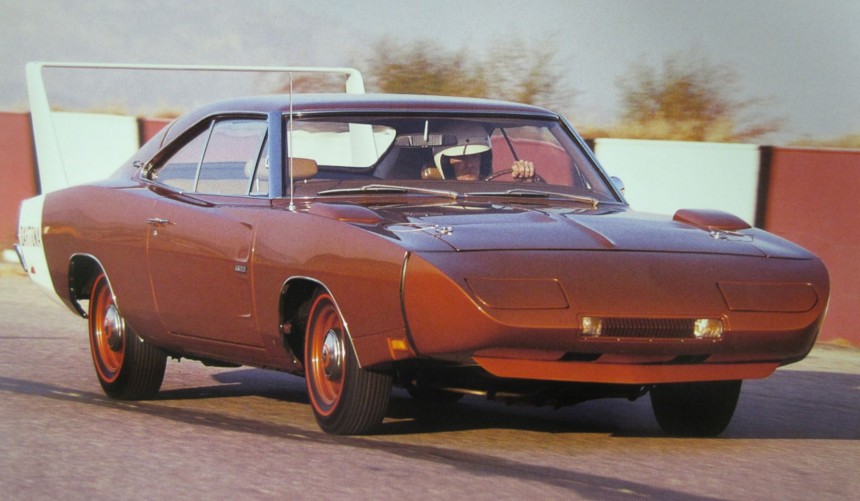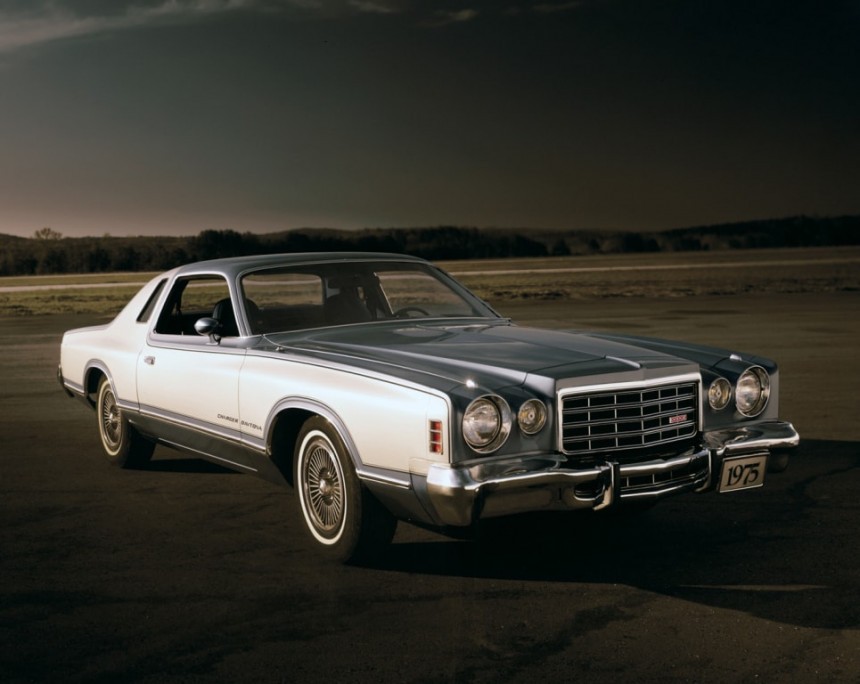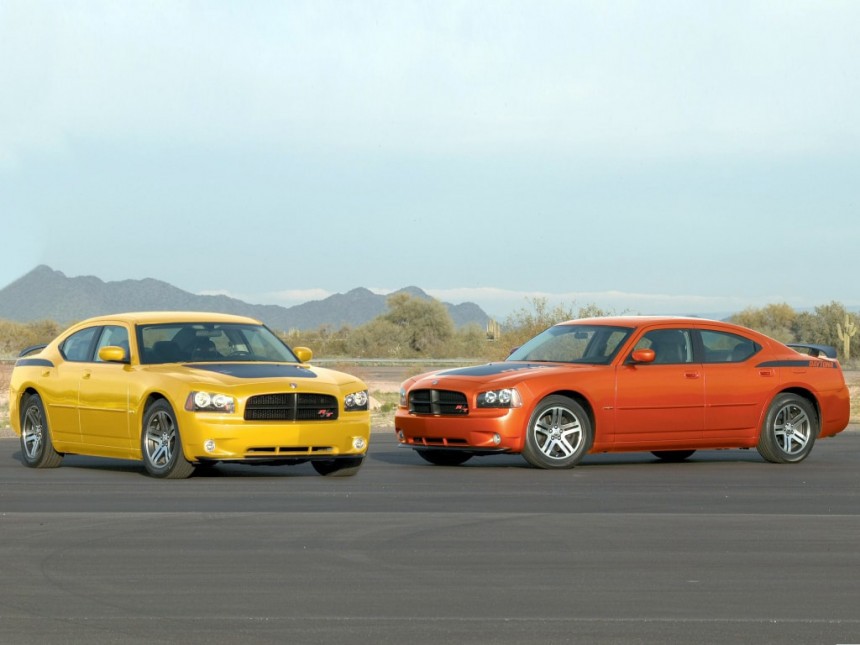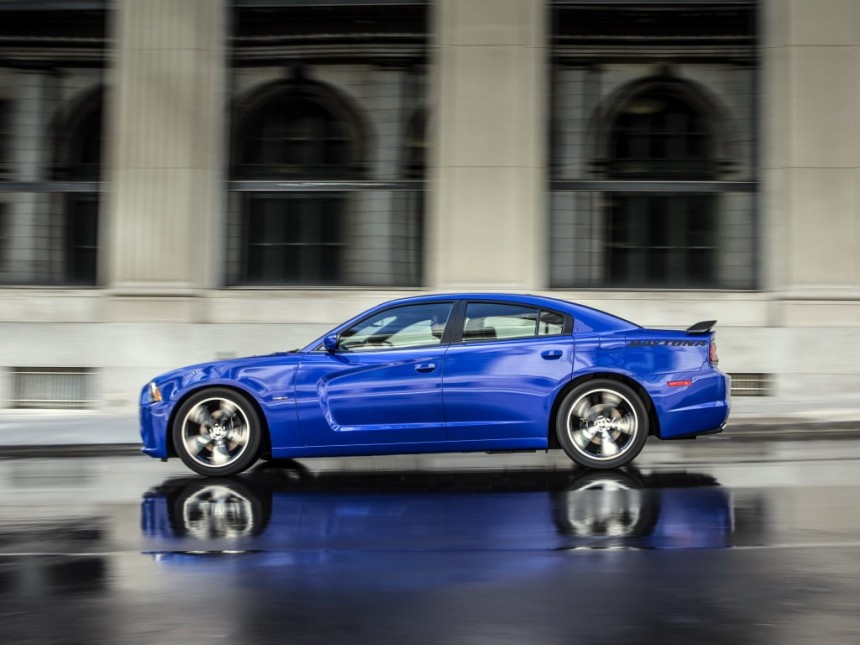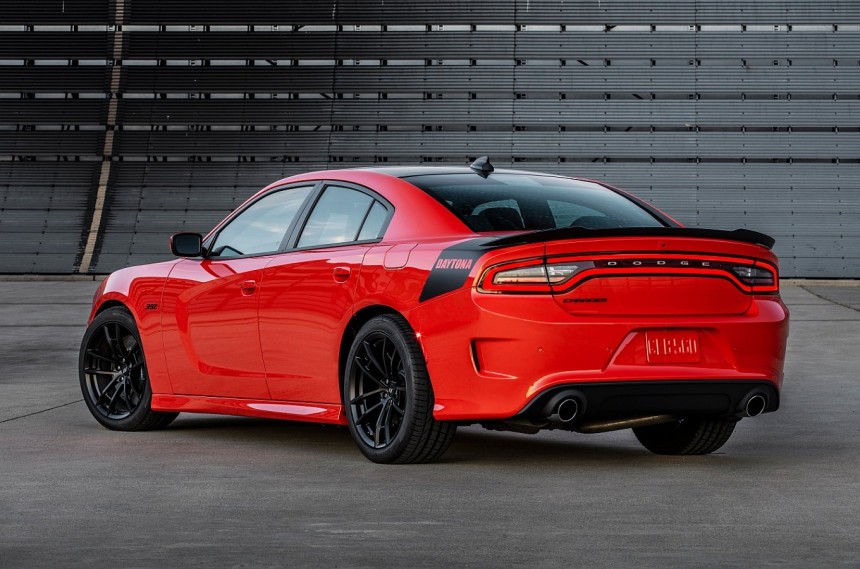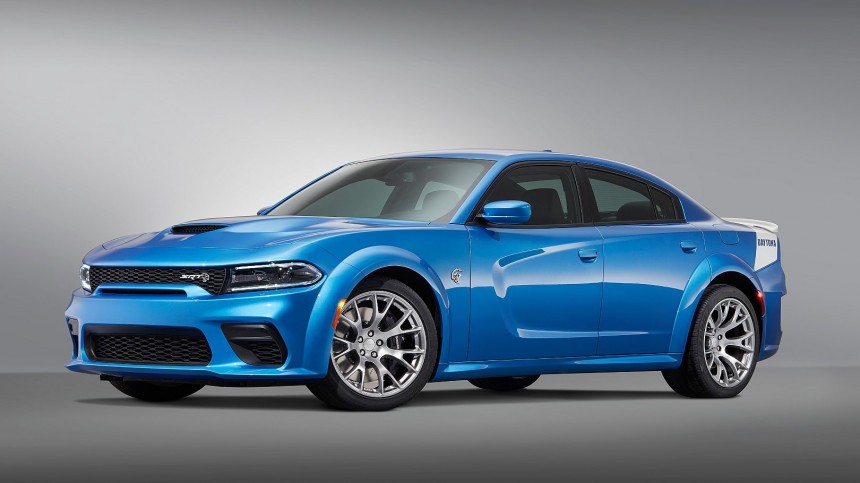The 2025 Dodge Charger just made its global debut, and it's official: the iconic Daytona name is back! And that's not the only big news. The Daytona is now an all-electric vehicle and the first factory muscle car to rely on battery power.
The Daytona is back in the spotlight four years since it was last seen in dealerships. But the legacy goes back to 1969 and includes seven different iterations. With the badge now set to hit the EV realm, let's take a closer look at the Daytona's predecessors.
The original Daytona was born out of Dodge's frustration with being unable to defeat Ford in NASCAR. It was 1968, and Dodge had yet to win the Cup Series. In fact, no Mopar had won the championship up to that point, though Chrysler and Plymouth came close on a few occasions. Ford had been on a winning streak since 1963.
Dodge tackled the 1968 season with the then-new Charger R/T, but the muscle car could not keep up with the Ford Torino Talladega on the high-speed oval tracks. Thus, Dodge created the Charger 500, featuring a flush rear window and a flush Coronet grille up front. The 500 also failed to stop Ford on its way toward a new Cup Series title.
In early 1969, Dodge took things up a notch and slapped a nose cone and a massive wing on the Charger. These produced 1,200 and 600 pounds of downforce, respectively, and increased stability. The aero package also enabled the muscle car to hit a top speed of 205 mph (330 kph). The Daytona achieved its goal and helped Dodge win its first NASCAR championship in 1970.
To homologate the "winged warrior" for NASCAR racing, Dodge built 503 street-legal examples of the Daytona. It came standard with a 375-horsepower 440-cubic-inch (7.2-liter) V8, while the 425-horsepower 426-cubic-inch (7.0-liter) HEMI was optional. And a legend was born!
It was 1975, and the golden muscle car era was already gone. Dodge moved the Charger into personal luxury car territory and introduced a fourth-generation model based on the Chrysler Cordoba. The Daytona name returned in 1976 after a seven-year hiatus, but it had nothing in common with the original.
An appearance package for the range-topping Charger SE, the Daytona option cost $132 and included a two-tone paint scheme, tape stripes, color-keyed "racing" mirrors, and a blacked-out front grille. Although it was a good-looking car, the 1976 Daytona had no aerodynamic extras and absolutely no link to NASCAR racing.
Engine options included a 360-cubic-inch (5.9.-liter) V8 good for 175 horsepower and a 400-cubic-inch (6.6-liter) V8 rated at up to 185 horses. Production numbers are unknown since Dodge bundled Daytona sales with the SE. The latter moved 35,337 examples.
The Daytona name resurfaced again after precisely seven years in 1984. This time around, however, it did not appear on a Charger (which Dodge revived as a subcompact in 1982). Chrysler turned the Daytona into a stand-alone nameplate for a sporty three-door hatchback based on the front-wheel-drive K platform.
The FF layout wasn't the only significant change compared to the previous Daytona. The sports car wasn't available with V8 engines either. Like many K-platform vehicles of the era, the Daytona came with a selection of naturally aspirated and turbocharged four-cylinder engines. Dodge also offered a Mitsubishi-sourced V6 option.
The Daytona soldiered on through 1993 and spawned numerous performance-oriented special editions. The lineup included IROC, R/T, and Shelby versions. The R/T package, which arrived toward the end of the car's lifecycle, turned the Daytona into a 224-horsepower hot-hatchback.
The Daytona was relatively popular, moving more than 30,000 units annually in seven of its ten model years in showrooms. Peak sales reached 69,998 examples in 1989. In all, Dodge delivered 387,021 cars. A more luxurious Chrysler Laser version was available from 1984 to 1986.
After about 20 years of absence, the Charger nameplate returned for the 2006 model year. And Dodge didn't waste time and introduced a Daytona package almost immediately. It was the first four-door sedan to wear the iconic name.
Officially called the Charger Daytona R/T, the first modern Daytona packed a high-output version of the 5.7-liter HEMI V8 (350 horsepower) and a stiffer suspension. Visual add-ons included a chin spoiler, a black rear spoiler, "HEMI" decals on the hood, and "Daytona" graphics on the rear fenders.
The 2006 Daytona also spearheaded the reintroduction of High-Impact colors. The beefed-up sedan was made available in Go ManGO!, Top Banana, and Tor Red. The Daytona remained in production as a limited-edition model through 2009. Dodge sold 14,950 units.
After four years of absence, the Daytona returned for the 2013 model year. Again a limited-edition model. It was based on the Charger R/T and R/T Road & Track trim levels. It broke cover with custom graphics, exclusive 20-inch wheels, and "Daytona" embroidery on the cloth or Nappa leather/suede seats.
The Daytona was part of a massive roll-out of special-edition versions that also included the Juiced, R/T Blacktop, and the SRT8 392 Appearance Package. Limited to 2,500 units, the 2013 Charger Daytona came with a 5.7-liter HEMI V8 engine rated at 370 horsepower.
Also a one-year-only model, the 2017 Daytona was very simiar to its predecessor. Goodies included a "HEMI" hood decal, a wrap-around "Daytona" rear stripe, and a black decklid spoiler. But unlike the 2013 version, this Daytona was available in High-Impact colors like Green Go, Go Mango, Tord, and Yellow Jacket.
Dodge expanded the package to the SRT 392 trim. So, in addition to the 5.7-liter HEMI producing 370 horsepower, the Daytona was also available with the 6.4-liter HEMI that generated 485 horses. Dodge sold 3,631 R/Ts and 2,508 392s for a total production of 6,139 units.
The most recent iteration of the Daytona arrived in 2020 as a package for the mighty Dodge Charger SRT Hellcat Widebody. Powered by the same supercharged, 6.2-liter HEMI V8, it became the most powerful Daytona ever thanks to a rating of 717 horsepower.
Daytona-specific details remained similar to the previous model: a unique stripe around the rear end, 20-inch wheels, and serialized plates on the dashboard. The four-color palette included a cool and exclusive throwback to the golden muscle car era: B5 Blue. Production was limited to just 501 units.
1969 Daytona - The birth of an icon
Dodge tackled the 1968 season with the then-new Charger R/T, but the muscle car could not keep up with the Ford Torino Talladega on the high-speed oval tracks. Thus, Dodge created the Charger 500, featuring a flush rear window and a flush Coronet grille up front. The 500 also failed to stop Ford on its way toward a new Cup Series title.
In early 1969, Dodge took things up a notch and slapped a nose cone and a massive wing on the Charger. These produced 1,200 and 600 pounds of downforce, respectively, and increased stability. The aero package also enabled the muscle car to hit a top speed of 205 mph (330 kph). The Daytona achieved its goal and helped Dodge win its first NASCAR championship in 1970.
To homologate the "winged warrior" for NASCAR racing, Dodge built 503 street-legal examples of the Daytona. It came standard with a 375-horsepower 440-cubic-inch (7.2-liter) V8, while the 425-horsepower 426-cubic-inch (7.0-liter) HEMI was optional. And a legend was born!
1976-1977 Daytona - The appearance package
An appearance package for the range-topping Charger SE, the Daytona option cost $132 and included a two-tone paint scheme, tape stripes, color-keyed "racing" mirrors, and a blacked-out front grille. Although it was a good-looking car, the 1976 Daytona had no aerodynamic extras and absolutely no link to NASCAR racing.
Engine options included a 360-cubic-inch (5.9.-liter) V8 good for 175 horsepower and a 400-cubic-inch (6.6-liter) V8 rated at up to 185 horses. Production numbers are unknown since Dodge bundled Daytona sales with the SE. The latter moved 35,337 examples.
1984-1993 Daytona - Stand-alone nameplate
The FF layout wasn't the only significant change compared to the previous Daytona. The sports car wasn't available with V8 engines either. Like many K-platform vehicles of the era, the Daytona came with a selection of naturally aspirated and turbocharged four-cylinder engines. Dodge also offered a Mitsubishi-sourced V6 option.
The Daytona soldiered on through 1993 and spawned numerous performance-oriented special editions. The lineup included IROC, R/T, and Shelby versions. The R/T package, which arrived toward the end of the car's lifecycle, turned the Daytona into a 224-horsepower hot-hatchback.
The Daytona was relatively popular, moving more than 30,000 units annually in seven of its ten model years in showrooms. Peak sales reached 69,998 examples in 1989. In all, Dodge delivered 387,021 cars. A more luxurious Chrysler Laser version was available from 1984 to 1986.
2006-2009 Daytona - The first four-door sedan
Officially called the Charger Daytona R/T, the first modern Daytona packed a high-output version of the 5.7-liter HEMI V8 (350 horsepower) and a stiffer suspension. Visual add-ons included a chin spoiler, a black rear spoiler, "HEMI" decals on the hood, and "Daytona" graphics on the rear fenders.
The 2006 Daytona also spearheaded the reintroduction of High-Impact colors. The beefed-up sedan was made available in Go ManGO!, Top Banana, and Tor Red. The Daytona remained in production as a limited-edition model through 2009. Dodge sold 14,950 units.
2013 Daytona - One-year gem
The Daytona was part of a massive roll-out of special-edition versions that also included the Juiced, R/T Blacktop, and the SRT8 392 Appearance Package. Limited to 2,500 units, the 2013 Charger Daytona came with a 5.7-liter HEMI V8 engine rated at 370 horsepower.
2017 Daytona - The 392 HEMI steps in
Dodge expanded the package to the SRT 392 trim. So, in addition to the 5.7-liter HEMI producing 370 horsepower, the Daytona was also available with the 6.4-liter HEMI that generated 485 horses. Dodge sold 3,631 R/Ts and 2,508 392s for a total production of 6,139 units.
2020 Daytona - Hellcat power!
Daytona-specific details remained similar to the previous model: a unique stripe around the rear end, 20-inch wheels, and serialized plates on the dashboard. The four-color palette included a cool and exclusive throwback to the golden muscle car era: B5 Blue. Production was limited to just 501 units.
